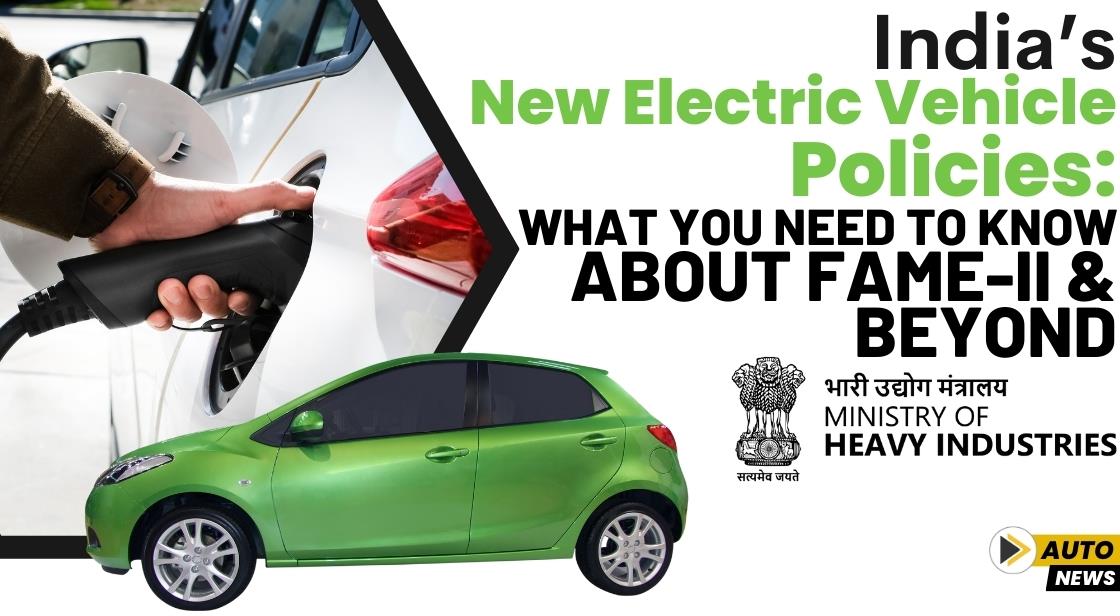India’s New Electric Vehicle Policies: What You Need to Know About FAME-II and Beyond

News Synopsis
During a recent Rajya Sabha session, Bhupathiraju Srinivasa Varma, the Minister of State for Steel and Heavy Industries, explained that the FAME-India Scheme phase-II is focused mainly on benefiting consumers rather than offering direct incentives to electric vehicle (EV) manufacturers.This marks a significant step in the Indian government's efforts to accelerate the adoption of electric vehicles across the country.
Key Aspects of the FAME-II Scheme
1. Overview of FAME-II
The Faster Adoption and Manufacturing of Hybrid and Electric Vehicles (FAME) India Scheme phase-II was launched in 2019 with an initial budget allocation of ₹10,000 crore, which was later augmented by an additional ₹1,500 crore. This scheme aims to drive the widespread adoption of electric vehicles in India through consumer-focused subsidies.
As of March 30, 2024, the FAME II scheme has provided subsidies for over 15.4 million electric vehicles. This encompasses approximately 13.6 million two-wheelers, 1.57 million three-wheelers, and 20,352 four-wheelers. Notable beneficiaries of the scheme include Tata Motors, recognized for its electric three- and four-wheel vehicles, and Ola, which specializes in electric two-wheelers.A total of 221 electric vehicle models have been supported under this initiative.
2. India’s Strategic Position
As the world’s third-largest automotive market, India is strategically positioning itself to lead the transition from traditional internal combustion engines to electric vehicle technology. The government envisions electric vehicles becoming a substantial segment within the automotive sector, aligning with broader environmental and economic goals.
New Initiatives Beyond FAME-II
1. Scheme to Promote Manufacturing of Electric Passenger Cars
On March 15, 2024, the Ministry of Heavy Industries introduced a new initiative titled the ‘Scheme to Promote Manufacturing of Electric Passenger Cars in India’. This scheme aims to attract global electric vehicle manufacturers and establish India as a prominent manufacturing hub for electric vehicles.
Under this scheme, approved manufacturers can import electric passenger cars (e-4W) at a significantly reduced customs duty of 15%, down from the current range of 70-100%. The first stakeholder consultation for this scheme took place on April 18, 2024, featuring major Original Equipment Manufacturers (OEMs).
2. Complementary Initiatives
This new scheme complements existing measures, including the FAME India scheme, the Production Linked Incentive (PLI) schemes for the automotive sector, and the Advanced Chemistry Cell (ACC) manufacturing initiative. Together, these measures form a comprehensive strategy to accelerate both the adoption and manufacturing of electric vehicles in India.
3. Expected Outcomes and Goals
Dr. Hanif Qureshi, Additional Secretary at the Ministry of Heavy Industries, stated, “This scheme will help attract investments from global EV manufacturers and promote India as a manufacturing destination for e-vehicles. It will also generate employment and achieve the goal of ‘Make in India’.” The government aims for electric vehicles to represent 35-40% of two-wheelers, 9-11% of private four-wheelers, and 20-25% of shared four-wheelers by 2030.
Conclusion
The Indian government’s multi-faceted approach to promoting electric vehicles demonstrates a commitment to a cleaner and more sustainable future. By enhancing consumer incentives, offering manufacturing support, and setting ambitious targets, India is positioning itself at the forefront of the global electric vehicle revolution. These efforts are expected to address critical national priorities such as reducing air pollution, improving the trade deficit, decreasing reliance on imported crude oil, and fostering innovation and economic growth.









